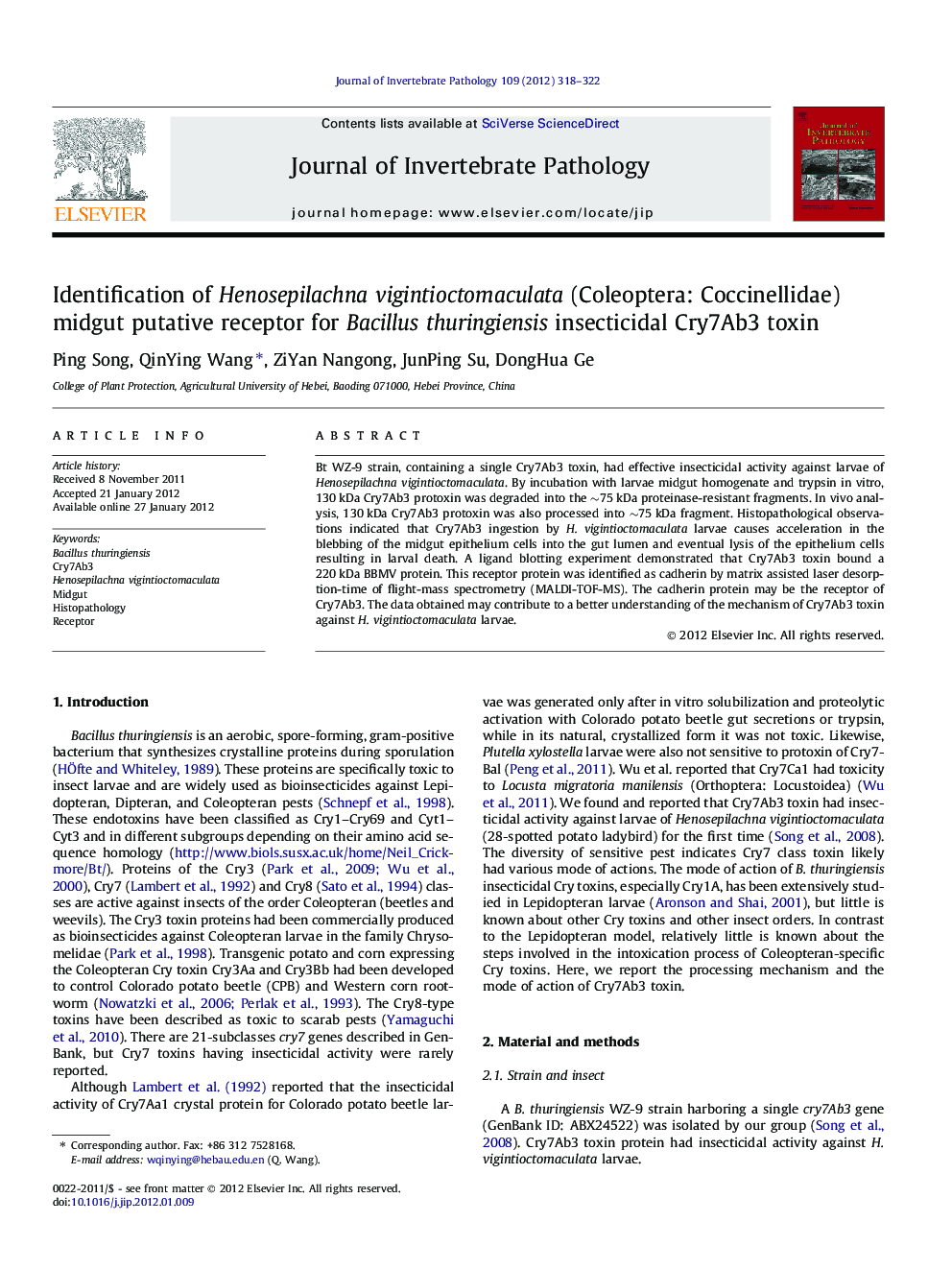| Article ID | Journal | Published Year | Pages | File Type |
|---|---|---|---|---|
| 6389787 | Journal of Invertebrate Pathology | 2012 | 5 Pages |
Bt WZ-9 strain, containing a single Cry7Ab3 toxin, had effective insecticidal activity against larvae of Henosepilachna vigintioctomaculata. By incubation with larvae midgut homogenate and trypsin in vitro, 130Â kDa Cry7Ab3 protoxin was degraded into the â¼75Â kDa proteinase-resistant fragments. In vivo analysis, 130Â kDa Cry7Ab3 protoxin was also processed into â¼75Â kDa fragment. Histopathological observations indicated that Cry7Ab3 ingestion by H. vigintioctomaculata larvae causes acceleration in the blebbing of the midgut epithelium cells into the gut lumen and eventual lysis of the epithelium cells resulting in larval death. A ligand blotting experiment demonstrated that Cry7Ab3 toxin bound a 220Â kDa BBMV protein. This receptor protein was identified as cadherin by matrix assisted laser desorption-time of flight-mass spectrometry (MALDI-TOF-MS). The cadherin protein may be the receptor of Cry7Ab3. The data obtained may contribute to a better understanding of the mechanism of Cry7Ab3 toxin against H. vigintioctomaculata larvae.
Graphical abstractDownload full-size imageHighlights⺠130 kDa Cry7Ab3 protoxin was degraded into the â¼75 kDa proteinase-resistant fragments. ⺠Cry7Ab3 ingestion cause lysis of the epithelium cells resulting in larvae death. ⺠Cry7Ab3 toxin bound a 220 kDa BBMV protein identified as cadherin. ⺠The mode of action of Cry7Ab3 toxin was similar as that of Cry1 toxin.
